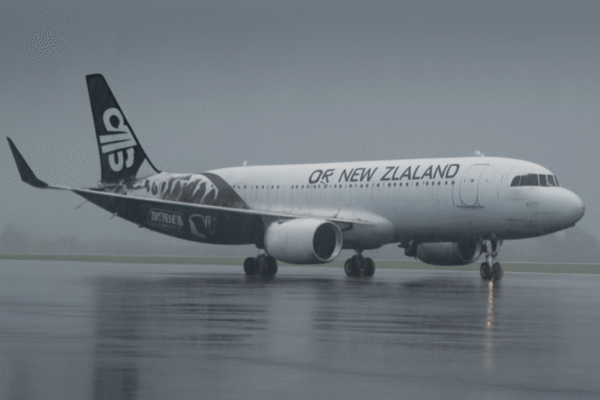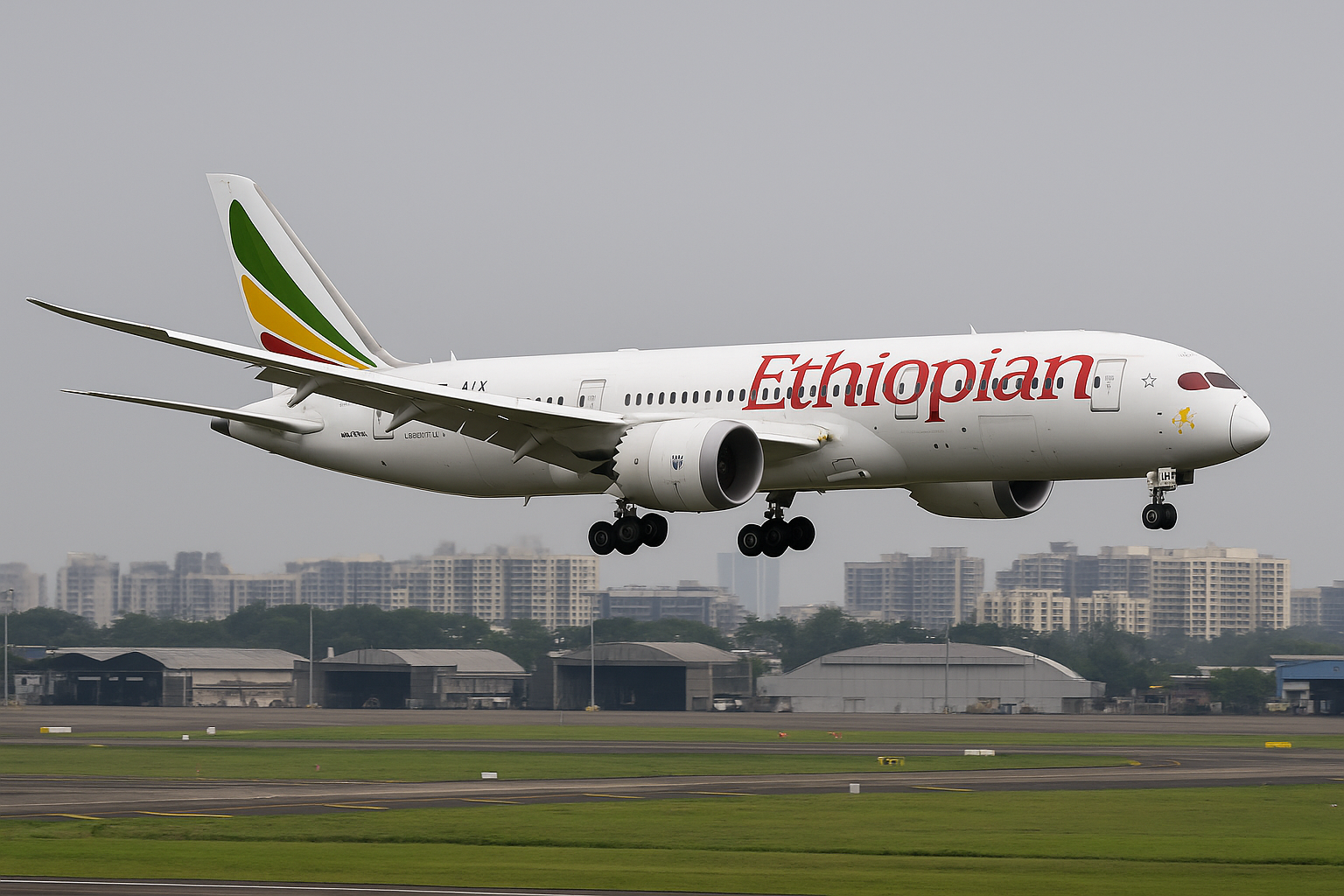On June 27, 2025, Ethiopian Airlines flight ET640, operating a Boeing 787-9 Dreamliner, made an emergency landing at Mumbai’s Chhatrapati Shivaji Maharaj International Airport (CSMIA) after experiencing a sudden loss of cabin pressure during its journey from Addis Ababa, Ethiopia, to India. The quick-thinking actions of the flight crew ensured the safety of all 300 passengers and 11 crew members aboard, as the aircraft descended rapidly and landed without incident.
This emergency response highlights the vital role of aviation safety protocols and the professional preparedness of flight personnel in protecting lives during in-flight crises.
Mid-Flight Emergency Over the Arabian Sea
While cruising over the Arabian Sea, flight ET640’s pilots detected a critical depressurization in the aircraft’s cabin. Loss of cabin pressure at cruising altitude can present life-threatening risks due to insufficient oxygen levels, prompting the crew to immediately initiate a controlled emergency descent to below 10,000 feet — the altitude where breathable air can safely support passengers and crew.
According to flight tracking data, the Boeing 787-9 aircraft, registered ET-AXS, descended rapidly from approximately 35,000 feet to 17,900 feet in a matter of minutes. The maneuver was executed at 7:00 PM UTC, more than an hour before the scheduled arrival time in Mumbai.
Safe Landing and Immediate Medical Response
By 1:55 AM IST, the aircraft had landed safely at Chhatrapati Shivaji Maharaj International Airport. Ground emergency services were alerted in advance and stood by as the aircraft taxied to its stand. Medical teams were swiftly deployed to assess passenger well-being.
Seven passengers reported experiencing mild dizziness and light-headedness—common symptoms following a cabin depressurization event. One individual was taken to a nearby hospital for precautionary medical observation, while the remaining six were treated onsite and cleared for discharge shortly afterward.
Aircraft Details and Crew Proficiency
The Boeing 787-9 involved in the incident is part of Ethiopian Airlines’ modern long-haul fleet and is equipped with automated oxygen mask deployment and pressurization monitoring systems. At just over five years old, the aircraft had recently undergone routine inspections as per international aviation standards.
The crew’s training and strict adherence to emergency protocols played a decisive role in ensuring the incident did not escalate further. Ethiopian Airlines, which has earned a reputation for safety and operational excellence across Africa and beyond, credited the crew for their quick response.
Initial Investigation and Grounding of Aircraft
Following the safe landing, Ethiopian Airlines issued an official statement confirming the event and announced that the aircraft had been grounded at Mumbai for technical evaluation. Preliminary assessments indicate a possible fault in the pressurization system, but the exact cause remains under investigation.
India’s Directorate General of Civil Aviation (DGCA) has launched a full inquiry into the incident in coordination with Ethiopian Airlines engineers, maintenance staff, and Boeing technical representatives. A comprehensive inspection of the aircraft is underway at Mumbai Airport, and findings are expected in the coming days.
Passenger Support and Alternative Arrangements
To ensure minimal disruption to passenger plans, Ethiopian Airlines arranged accommodations in Mumbai and deployed an alternative aircraft to continue the journey. Passengers with onward connections from Mumbai have been rebooked on subsequent flights.
The airline has also established a dedicated customer service line to assist affected travelers and provide updates on rescheduled travel options. In its public statement, Ethiopian Airlines praised its crew for their “outstanding professionalism” and thanked Indian aviation authorities for their swift support and coordination.
Context: Aviation Safety and Recent Events
This incident follows a recent uptick in global attention to aviation safety issues, particularly involving wide-body aircraft like the Boeing 787. Earlier this month, an Air India Dreamliner operating in Ahmedabad also experienced technical malfunctions, although unrelated to pressurization.
While the two events involve the same aircraft model, aviation experts caution against drawing immediate links between isolated incidents. Each situation is evaluated independently based on mechanical, atmospheric, and human factors.
Safety Training: A Pillar of Aviation Security
Flight ET640’s emergency landing reinforces the value of continued investment in pilot training and aircraft safety systems. Cabin depressurization events, while rare, require rapid and informed decision-making to prevent passenger injury or worse. Ethiopian Airlines’ rigorous training programs and adherence to international safety protocols were evident in the effective resolution of this mid-air emergency.
The airline has reaffirmed its commitment to transparency and corrective action if needed. Ethiopian Airlines is also collaborating with aviation regulatory bodies to implement any recommendations resulting from the investigation.
Conclusion: Passengers Safe, Safety Protocols Effective
The emergency descent and successful landing of Ethiopian Airlines flight ET640 underscore the effectiveness of modern aviation safety systems and the critical role of well-trained crews. Thanks to timely intervention and coordination between airline and airport teams, the situation was swiftly brought under control with minimal disruption to travelers.
As Ethiopian Airlines continues to support affected passengers and investigate the technical fault, the airline remains committed to delivering safe, reliable international service. The incident, while concerning, demonstrates how safety protocols function exactly as intended—protecting lives when the unexpected occurs.
For more travel news like this, keep reading Global Travel Wire

















